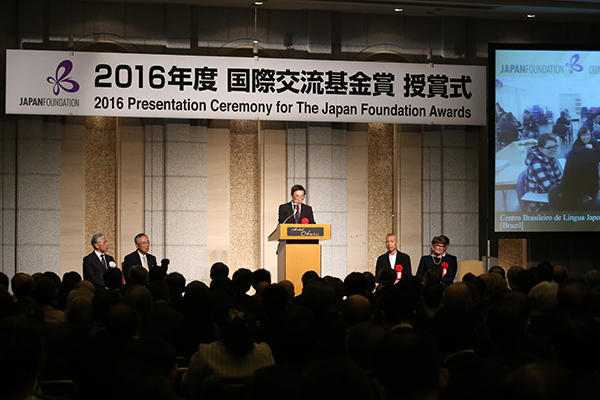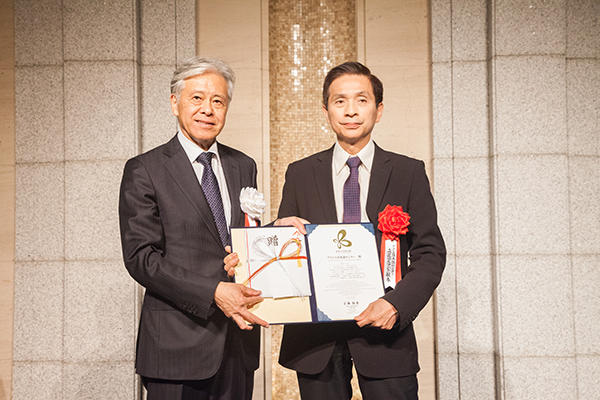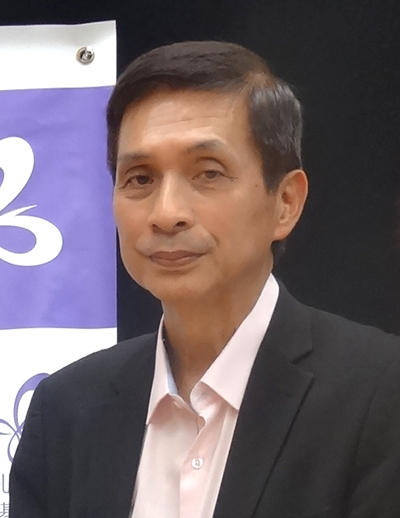How did Japanese-language Education Develop in Brazil, the Home of the Largest Nikkei Community?
Armando Toshiharu Tachibana (President,Centro Brasileiro de Língua Japonesa)
Brazil is home of the largest community of Nikkei, or people of Japanese descent. Their number reaches approximately 1.6 million. When Japanese migration began in 1908, Japanese-language education in Brazil was implemented with priority given to heritage language education for Japanese-Brazilian children. As the generational change in the Nikkei community advanced, however, heritage language education has shifted to teaching Japanese as a foreign language. The Centro Brasileiro de Língua Japonesa (CBLJ) was established against this backdrop in 1985, and has provided support to Japanese-language teachers and learners, and worked to popularize Japanese culture. It has also contributed to the advancement of Japanese-language education in South American countries with large Nikkei communities. The CBLJ was given a 2016 Japan Foundation Award for its distinguished achievements. Armando Toshiharu Tachibana, President of the CBLJ, delivered a lecture, titled "The Situation and Challenges of Japanese-language Education for Future Generations: The Meaning of Japanese-language and Culture to Brazilian Youths," on October 20, 2016, at Tokyo University of Foreign Studies (TUFS) in commemoration of CBLJ's receipt of the Japan Foundation Award.
(Excerpt from the Japan Foundation Awards 2016 Commemorative Lecture delivered at TUFS on October 20, 2016)
The Japan Foundation Awards 2016 Presentation Ceremony (October 18, 2016)
Japanese-language learning was indispensable for the young people who dreamed of returning to Japan
Established in 1985 in São Paulo as Centro de Difusão da Língua Japonesa (Center for Diffusion of the Japanese Language) and renamed in 2003, CBLJ has fostered more than 1,000 Japanese-language teachers and supports approximately 20,000 learners annually. It develops Japanese-language teaching materials and conducts teacher training, and also holds Japanese culture experience classes in areas such as pencil and brush calligraphy, painting, comics and anime, and essay writing competitions with the goal of spreading Japanese culture and improving Japanese-language proficiency.
São Paulo-born Armando Toshiharu Tachibana is the first nisei (a son or daughter of Japanese immigrants) to become president of CBLJ. In his lecture, he spoke of the changes and current situation of the Nikkei community and Japanese-language education in Brazil, sharing episodes of his own experience as a Japanese-language learner. The lecture consisted of three parts, and each part was followed by a Q&A session moderated by Chika Takeda, Professor at the School of Language and Culture Studies, TUFS.
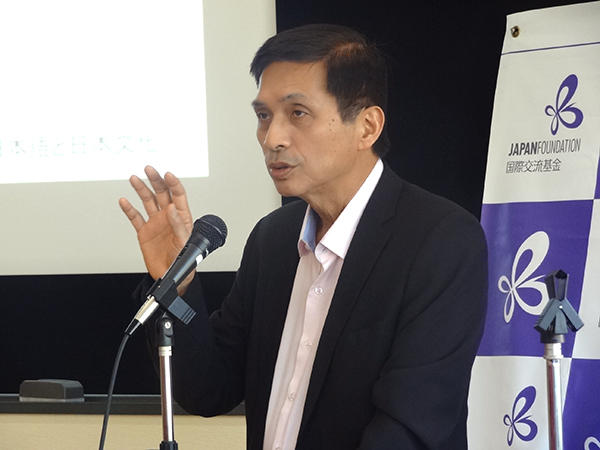
Armando Toshiharu Tachibana delivers a lecture to students of TUFS
The first part of the lecture looked back on the history of migration from the period of the first Japanese settlers in Brazil to the end of World War II.
Tachibana: The history of Japanese immigration to Brazil begins in 1908. The first Japanese settlers--a group of 781 people--arrived in Brazil on the Kasatomaru. Then Japanese immigrants started as self-employed farmers and formed settlements composed of several families from around 1913, and gradually, Japanese colonies were established in various places in the state of São Paulo. In that period, Brazil was also accepting immigrants from Europe, so there were German, Italian, and Spanish colonies, too.
In 1932, the number of Japanese settlers in Brazil reached about 130,000 people. As the immigrants lived together in close-knit communities, they were able to open Japanese-language schools. There, they chose textbooks used by Japanese elementary schools to teach Japanese language. Because Portuguese was also taught at schools, daughters of farming families who graduated from high school and spoke both languages serevd as teachers. At that time, the children of Japanese settlers attended local Japanese schools from first to third grade in elementary school, and then went to Brazilian public schools from fourth grade on.
What were the intentions of the immigrants in that period? Most of them planned to make money in Brazil and eventually return to Japan. That is why learning Japanese was absolutely necessary. Conversely, they believed they only needed just enough Portuguese to get by in their daily life in Brazil. In fact, after studying Portuguese in their local Japanese school for three years, most children did not continue studying the language.
Teaching foreign languages to children below 14, however, was prohibited in 1937, immediately before the start of World War II. In 1938, the government of Brazil banned the use of Japanese, Italian, and German. Then, in 1940, it also banned publication of newspapers and magazines in Japanese.
During the war, Japanese-language education was provided through the so-called "travelling classrooms" as Japanese schools were closed. My mother told me that she continued her studies at such a classroom. Nikkei people who lived in that period and are now in their 80s not only speak poor Portuguese, but their Japanese is not very good either. As they did not want their sons and daughters to become like them and to experience the same hardships, Japanese immigrants of that generation strongly wished for a proper Japanese language education for their children.
Takeda: At the end of the first part of the lecture, I would like to open the floor for questions from the audience.
Student: I learned that Japanese immigrants and people of Japanese descent living in Allied countries were forcibly relocated to internment camps during World War II. Did anything similar happen in Brazil?
Tachibana: There were demands from the U.S. to the Brazilian government to send immigrants to the U.S. However, the then President of Brazil Getúlio Dornelles Vargas did not give in to these demands, and consequently there was no forcible internment of Japanese living in Brazil to the U.S. In Peru, apparently, most Japanese were deported to internment camps in the U.S.
The new generation of Nikkei gave priority to sending their children to Brazilian public schools
The second part of the lecture focused on the issues of the Nikkei community and Japanese-language education during the period from the end of World War II to the 1990s.
Tachibana: I was born after World War II, in 1954. I belong to the generation from the period described in the second part of this lecture, so I will share some of my personal experiences in this part.
After the end of the war, the Japanese-language schools in areas with concentrated Nikkei populations were re-opened. However, they only taught Japanese language this time.
In 1957, the Seminário Brasileiro de Professores de Língua Japonesa (Seminar for Japanese-language Teachers) in Brazil was established. Under that program, teachers collaborated in their efforts to teach Japanese language to children. The predecessor of CBLJ, the Centro de Difusão da Língua Japonesa, was established nearly 30 years later, in 1985. I believe that this award presented by the Japan Foundation is a result of the work of the teachers who have devoted themselves to Japanese-language education.
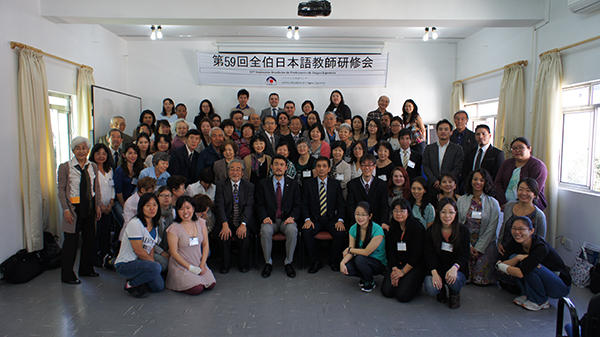
The Seminário Brasileiro de Professores de Língua Japonesa is now implemented by CBLJ
I spoke with my family in Japanese until I was five, and began studying Portuguese after I enrolled in Brazilian public school. My Portuguese was very poor, and the teachers often warned me not to use Japanese in school.
After classes in the public school, I attended a Japanese-language school. This was the period from the 1960s through the 1970s. Back then, we still studied from Japanese-language textbooks used by schools in Japan.
In that period, Nikkei children had on average the Japanese-language proficiency of fourth grade at elementary schools. I attended the Japanese-language school up to the sixth grade, so if the fourth grade level is the average, I studied Japanese to a level slightly above it.
As I said in the first part of the lecture, before the war, Japanese immigrants intended to return to their homeland someday. But the situation changed after the war. Their intention to return to Japan was replaced by a desire to establish their roots in Brazil. Naturally, Nikkei people still considered the Japanese language a valuable part of their heritage, but it was much more important for them to study Portuguese. That is why Nikkei parents gave priority to sending their children to Brazilian public schools.
As a result, it became impossible for Japanese schools to provide classes according to the grade level, like 10-year olds were at the first grade level and 12-year olds were the third grade level. It was because the age of the children did not match their Japanese-language proficiency. Furthermore, there were great gaps in the proficiency of individual students. This posed significant problems for the teachers. How did they solve these problems? The schools developed original Japanese-language textbooks for children in Brazil.
Let's talk a bit about Japanese culture.
I had a favorite hero when I was ten. It was "National Kid." "National" is the former name of the Panasonic brand. National Kid was a Japanese science fiction TV series for children, which was also broadcast in Brazil and gained immense popularity. After that, I got hooked on Ultraman. These heroes symbolized Japanese culture for us and had a cult status among children.
Takeda: This is the end of the second part of the lecture. I would like to ask one question. Mr. Tachibana, you attended both a Brazilian school and a Japanese-language school, so you had to spend more time at school than ordinary Brazilian children. Did you resent this?
Tachibana: Of course I did! That is why I quit studying Japanese when I was in sixth grade in elementary school. After my family moved, I said that I would not attend the Japanese-language school because it was too far away, but that was just an excuse. The truth is I did not want to study Japanese.
Yet, I thought that I could always study Japanese if I ever wanted to. In fact, I resumed my studies in my 30s. I had become a physics teacher and already had two children, but I made up my mind and applied for a teacher training program under the scholarship scheme provided by the Japanese MEXT (Ministry of Education, Culture, Sports, Science, and Technology). That is how, at the age of 34, I came to Japan for the first time. I spent almost two and a half years here and acquired the Japanese-language proficiency that allows me to deliver this lecture in front of you here today.
Student: You said that you developed strong feelings for Japanese culture, including National Kid, when you were small, but did Japanese culture help you when you studied Japanese in Brazil?
Tachibana: Japanese shonen and shojo manga were available in Brazil, too, and perhaps reading manga helped my Japanese studies.
Shift from teaching Japanese as part of heritage language education to teaching Japanese as a foreign language
Some 110 years have passed since the start of Japanese migration to Brazil, and already the sixth generation of descendants of the first Japanese settlers was born. In the third part of his lecture, Tachibana focuses on the modern awareness of the Nikkei community.
Tachibana: The so called decasségui migration of Brazilians of Japanese descent to Japan to escape the economic instability in Brazil began in 1988 and reached its peak in 1991. There are approximately 1.6 million Nikkei in Brazil, and in the peak period of decasségui some 320,000 people traveled to Japan. The global financial crisis of 2008 had a very heavy toll on Japan's economy, and many Nikkei returned to Brazil. Yet, 180,000 Brazilians of Japanese descent are still living in Japan.
If we examine what kind of people come to Japan as decasségui workers, we will see that most are university graduates unable to land well-paying jobs. In Brazil, as in Japan, the number of children is declining, and people in their productive age are leaving to look for work abroad. These trends have a negative impact on the operation of Japanese-language schools.
For instance, sports day events that were regularly in the school calendar have all but disappeared. When my son, who is now 35, was attending a Japanese-language school, sports day events were held once every two years. Then, they have stopped entirely.
As for the status of Japanese-language education in the Nikkei community today, it has shifted from Japanese heritage language education to foreign language learning.
Up until I was ten, the foreign language taught as part of compulsory education in Brazil was French. Later, English was recognized as a foreign language subject by the Board of Education, and since then it has been taught at schools. For young people of Japanese descent, today English has become much more valuable than Japanese.
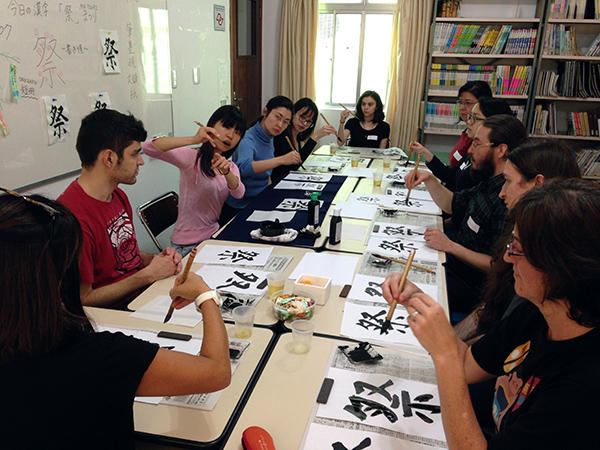
Japanese culture experience course implemented at CBLJ
In addition to my work as President of CBLJ, I am also President of a private school. This is what I say to my students regardless of whether they are Nikkei or not. "Languages are important. You should study English at any cost! In addition to English, it is better to study Spanish. And then, if you are interested, you can study Japanese." I do not tell them they should study English only, nor do I insist that they should choose Japanese over English. We are living in a multicultural era. I tell my students that, if possible, they should learn a second and even a third language.
Today, the number of non-Nikkei learners enrolling in Japanese-language schools is gradually increasing. In some regions, non-Nikkei learners account for nearly half of the students at the schools.
Student: When the first Japanese migrants settled in Brazil, they initially intended to return to Japan someday. Do modern Nikkei people, who consider Japanese a foreign language, have an identity as Japanese?
Tachibana: Young Nikkei people today have a strong desire to learn about Japan. Most of them, however, consider themselves Brazilian.
Nevertheless, it could perhaps be claimed that some inherently Japanese traits and mentality have been passed down from the first to the second, then to the third and fourth generations. This is what Tachibana said in his lecture.
Tachibana: Nikkei are hardworking and diligent. Also, they are extremely education-minded. In the state of São Paulo, Nikkei account for only 1 percent of the population, but back when I studied at the University of São Paulo, Nikkei students made up 16 percent of the entire student body. I believe that they maintain this share even today. Nikkei students apply themselves diligently to their studies, and the result of their efforts shows in the high rates of acceptance to the prestigious University of São Paulo, which rivals the University of Tokyo. This diligence of Nikkei people is one of their characteristics that are highly valued in Brazil.
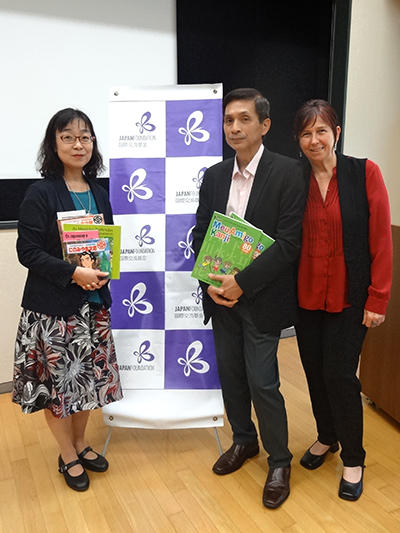
After the lecture, Tachibana and the moderator, Takeda, exchanged gifts of Japanese-language teaching materials. On the right side of Tachibana is his wife.
(Text: Sayuri Saito)
Related Articles
Back Issues
- 2025.6.24 Exclusive Interview:…
- 2025.5. 1 Ukrainian-Japanese I…
- 2024.11. 1 Placed together, we …
- 2024.5.24 The 50th Japan Found…
- 2024.5.24 The 50th Japan Found…
- 2024.5. 2 People-to-People Exc…
- 2024.2.19 Movie Theaters aroun…
- 2024.2.19 Movie Theaters aroun…
- 2023.4.24 The 49th Japan Found…
- 2022.10.24 Inner Diversity <2> …


